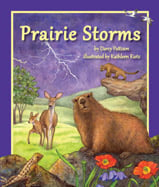Alignment to Standards for MA

| Grade | Number | Standard |
|---|---|---|
| 1 | 1.SS.1. | Identify temporal sequences such as days, weeks, months, years, and seasons. Use correctly words and phrases related to time (now, in the past, in the future) and recognize the existence of changing historical periods (other times, other places).(H) |
| 1 | 1.SS.4. | map is a representation of a space, such as the classroom, the school, the neighborhood, town, city, state, country, or world. (G) |
| 1 | 1.SS.7. | Define and give examples of a continent, mountain, river, lake, and ocean. (G) |
| 2 | 2-SSLS..7 | On a map of the world, locate the continent, regions, or countries from which students, their parents, guardians, grandparents, or other relatives or ancestors came. With the help of family members and the school librarian, describe traditional food, cust |
| 2 | 2.SS.1. | Use a calendar to identify days, weeks, months, years, and seasons. (H) |
| 2 | 2.SS.4. | Describe how maps and globes depict geographical information in different ways. (G) |
| 4 | 4-SSLS..12 | Identify and describe unique features of the United States (e.g., the Everglades, the Grand Canyon, Mount Rushmore, the Redwood Forest, Yellowstone National Park, and Yosemite National Park). (G) |
| 5-Mar | E&S:3-5.11. | Give examples of how the cycling of water, both in and out of the atmosphere, has an effect on climate. |
| 5-Mar | E&S:3-5.12. | slow processes such as erosion and weathering, and rapid processes such as landslides, volcanic eruptions, and earthquakes. |
| 5-Mar | E&S:3-5.6. | Explain how air temperature, moisture, wind speed and direction, and precipitation make up the weather in a particular place and time. |
| 5-Mar | E&S:3-5.7. | Distinguish among the various forms of precipitation (rain, snow, sleet, and hail), making connections to the weather in a particular place and time. |
| 5-Mar | E&S:3-5.8. | Describe how global patterns such as the jet stream and water currents influence local weather in measurable terms such as temperature, wind direction and speed, and precipitation. |
| 5-Mar | E&S:3-5.9. | Differentiate between weather and climate. |
| 5-Mar | LS:3-5.10 | organisms cause changes in their environment, some of these changes may affect the ecosystem. |
| 5-Mar | LS:3-5.5 | observed characteristics of plants and animals that are fully inherited (e.g., color of flower, shape of leaves, color of eyes, number of appendages) and characteristics that are affected by the climate or environment (e.g., browning |
| 5-Mar | LS:3-5.6 | adaptations to changes in the environment that enable organisms to survive, e.g., shape of beak or feet, placement of eyes on head, length of neck, shape of teeth, color. |
| 5-Mar | LS:3-5.7 | Give examples of how changes in the environment (drought, cold) have caused some plants and animals to die or move to new locations (migration). |
| 5-Mar | LS:3-5.8 | organisms meet needs in an environment by using behaviors in response to information (stimuli) received from the environment. |
| 5-Mar | LS:3-5.9 | Recognize that many plants and animals can survive harsh environments because of seasonal behaviors |
| PK-2 | E&S:PK-2.3. | Describe the weather changes from day to day and over the seasons. |
| PK-2 | E&S:PK-2.5. | Identify some events around us that have repeating patterns, including the seasons of the year, day and night. |
| PK-2 | LS:PK-2.4 | Describe ways in which many plants and animals closely resemble their parents in observed appearance. |
| PK-K | K.SS.5. | Tell or show what a map is and what a globe is. (G) |